Carex acutata is a species of sedge, a flowering plant in the family Cyperaceae. It was first formally named by Francis Boott in 1846. Carex acutata is native to South America. In Bolivia it occurs at elevations of 3,500–4,000 m (11,500–13,100 ft).

Carex alligata, the Hawaiʻi sedge, is a species of sedge that is endemic to Hawaii.
Carex amicta is a species of sedge that was first formally named by Francis Boott in 1867. It is native to South America, from Venezuela to Peru.
Carex andersonii is a species of sedge that was first described by Francis Boott in 1846. It is native to Chile and Argentina.
Carex aperta, known as Columbian sedge, is a species of sedge that was first described by Francis Boott in 1839. It is native to eastern Russia, northern China, western Canada, and the northwestern United States. It grows in wet meadows, along shorelines, and in other wet habitats.

Carex arctata, known as drooping woodland sedge, is a species of sedge native to eastern North America. It is sometimes called black sedge, compressed sedge, or drooping wood sedge. It occurs from Manitoba to the eastern seaboard in Canada, south to northwestern North Carolina, and west to Minnesota. Carex arctata grows in bogs, hardwood forests, and spruce forests.
Carex banksii is a species of flowering plant in the sedge family, Cyperaceae. Carex banksii is native to South America and was first formally named by Francis Boott in 1839.
Carex bichenoviana, the plains sedge, is a species of sedge that was first formally named by Francis Boott in 1858. It is native to eastern Australia and has been introduced to New Zealand. It has previously been considered a variety of Carex pumila.

Carex capillacea, common name yellowleaf sedge in Tasmania, is a species of sedge found in Assam, the far east of Russia, New Guinea, south east Australia, New Zealand, Malesia, China, Japan and India.
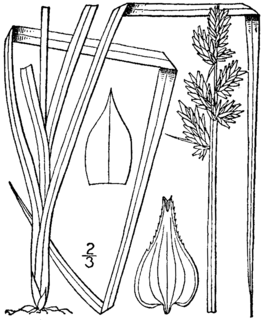
Carex conjuncta, known as soft fox sedge, is a species of sedge that was first formally named by Francis Boott in 1862. It is endemic to the central and eastern United States.
Carex gunniana is an Australia species of sedge that was first described in 1845 by Boott in the Proceedings of the Linnean Society of London. It is native to eastern Australia and Tasmania.

Carex lanceolata is a species of sedge, native to the eastern half of China, Mongolia, eastern Siberia, Korea, Sakhalin, and Japan. Its seeds are dispersed by ants.
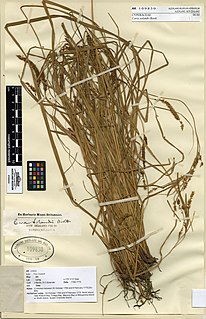
Carex solandri is a species of sedge that was first described by Francis Boott in 1853.
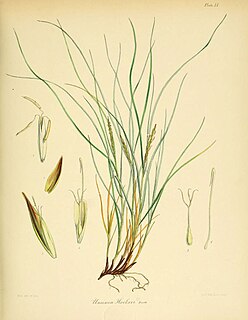
Carex erebus is a member of the sedge family and is found on the Antarctic Islands of Australia and New Zealand.
Carex argyrantha is a species of sedge and is native to the eastern US and Canada.

Carex testacea is a species of sedge and is native to New Zealand.
Carex virgata is a species of sedge.
Carex walkeri is a species of sedge.
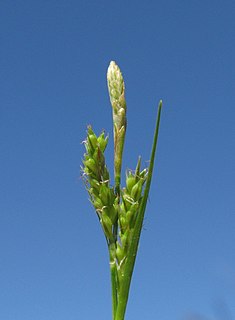
Carex breviculmis, called the Asian shortstem sedge, is a species of flowering plant in the genus Carex, native to Asia from the Indian subcontinent to Southeast Asia, China, Taiwan, Korea, Japan, north as far as Khabarovsk Krai, and Malesia, New Guinea, Australia, Norfolk Island and New Zealand. It has been introduced to the US state of Mississippi. Typically found in forests, it is quite shade tolerant.
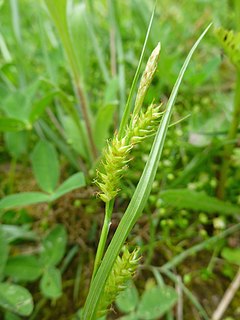
Carex punctata, the dotted sedge, is a species of flowering plant in the genus Carex, native to Macaronesia, northwest Africa, southern, central, and northern Europe, and Turkey. Its chromosome number is 2n=68.









